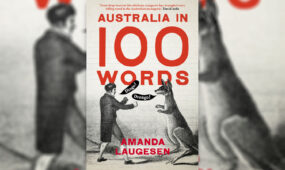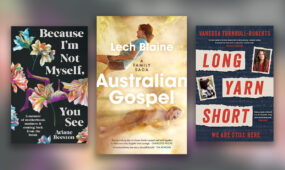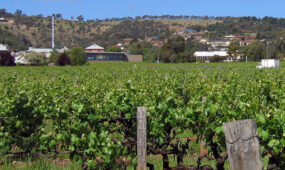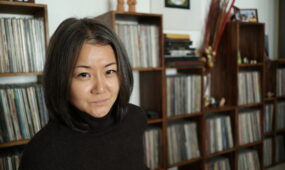Novel helps kids understand gender identity
Books & Poetry
A groundbreaking book challenging conventional ideas about gender and identity is part of a new sub-genre in children’s literature.

Today, Scholastic Australia publishes the junior novel George, written by Alex Gino, who is a genderqueer author of “progressive middle-school grade fiction”, and a queer and transgender activist.
George tells the story of Melissa, a 10-year-old girl who the world sees as a boy named George.
The narrative covers a period of several weeks in Melissa’s life when a school production of Charlotte’s Web acts as a catalyst for Melissa to begin to share this previously private fact about herself with her mother, older brother and best friend.
The book was released in the US in August, and has received some powerful comments from bloggers and reviews in publications such as The Guardian and School Library Journal.
There has been a lot of talk this year about the rise of young adult novels that feature LGBTQI protagonists telling their stories. The volume of publications, arguably still small, is undeniably growing.
Not as common is the publication of novels for readers aged eight to 12 that focus on topics of sex, gender and identity. Journalist Alexander Alter, in the New York Times, described writing for this age bracket as the “next frontier for authors writing about transgender people”.
While we need young adult fiction that challenges conventional ideas of being, author Vikki VanSickle argued in 2013 that:
“the middle grade years (ages 9-12) are when kids are the most in need of answers, empathy, and someone to relate to. YA is too late. You need to reach children in their middle grade years, when it really counts.”
VanSickle’s position here makes sense from an individual and personal perspective, but also when looking broadly at gender development, differentiation, and performance in childhood.
Children develop a sense of gender norms very early, based on their environment. Researchers Carol Martin and Diane Ruble demonstrate:
“From a vast array of gendered cues in their social worlds, children quickly form an impressive constellation of gender cognitions, including gender self-conceptions (gender identity) and gender stereotypes.”
Melissa and George
One significant aspect of George is how the narrative is constructed with regard to references to Melissa. Throughout the novel, the narrator calls Melissa by her birth name, George, but uses female pronouns when speaking about Melissa, as does Melissa when referring to herself.
This contrasts with the male identity those around Melissa place on her, and she reacts strongly, emotionally and physically, every time she is referred to as a boy, or with a male pronoun:
The word man hit like a pile of rocks falling on George’s skull. It was a hundred times worse than boy, and she couldn’t breathe. She bit her lip fiercely and felt fresh tears pounding against her eyes.
This combination and switching of gendered identities offers different opportunities for discussion among readers. One is the fluidity of gender as a construct, that male and female, he and she, do not necessarily mean the same thing for every person.
Second is the acknowledgement of how powerful gendered language can be, particularly when it is directed at someone who does not recognise themselves within the confines of their assigned label.
The importance of having opportunities for questioning gender conventions cannot be overlooked when placed alongside statistics of violence, poor mental health, and suicide within the LGBTQI community.
George provides recognition for young readers who may not otherwise find characters they can relate to in conventional literature. It also provides all readers with an engaging and interesting entry point for a conversation about gender and identity.
The narrative gives Melissa freedom to be open about who she is. This contrasts profoundly with who those around her assume her to be, and speaks to the overwhelming sense of confusion and isolation which children can be left to deal with, when an open dialogue is not given to them.
This manifests in George with a conversation Melissa has with her mum:
They ate in silence at first. Scott was usually the one who talked the most at dinner. But a question was burning in George’s mind. Over and over it played.
“Mom?” she said after she swallowed the last bite of her hot dog. She barely realised she had spoken aloud.
“What’s up, Gee-gee?” George stopped. It was such a short little question, but she couldn’t make her mouth form the sounds.
“Mom, what if I’m a girl?”
The moments Melissa spends learning about what it means to be transgender and the language surrounding create important learning opportunities for all children (and arguably adults who may be reading the story with their child):
So George knew it could be done. A boy could become a girl. She had read on the Internet that you could take girl hormones that could change your body, and you could get a bunch of different surgeries if you wanted them and had the money. This was called transitioning.
Discrimination and exclusion often stem from fear, which can be attributed to lack of knowledge, and through Melissa’s increased awareness of the trans community, readers become similarly aware of some of the issues transgender people face:
“Sometimes transgender people don’t get rights.” George had read on the Internet about transgender people being treated unfairly.

Get InReview in your inbox – free each Saturday. Local arts and culture – covered.
Thanks for signing up to the InReview newsletter.
“That’s awful.”
“I know.”
It would be unhelpful to label novels such as George and others which have the stories of LGBTQI characters at their core as a publishing “trend”. This developing sub-genre is a movement, heralded by campaigns such as #Weneeddiversebooks, and in coming years, Melissa won’t be an anomaly in children’s literature: she will become part of the new status quo.
George is published by Scholastic in Australia
Rebecca Ciezarek is a PhD candidate in Children’s Literature, Victoria University. This article was first published on The Conversation.
Support local arts journalism
Your support will help us continue the important work of InReview in publishing free professional journalism that celebrates, interrogates and amplifies arts and culture in South Australia.
Donate Here






Comments
Show comments Hide comments